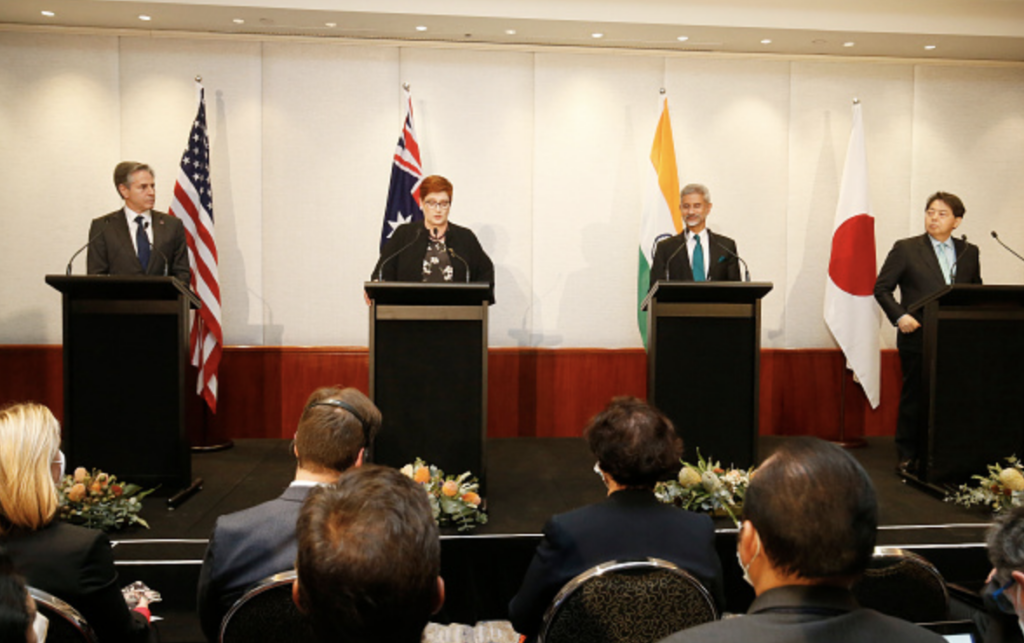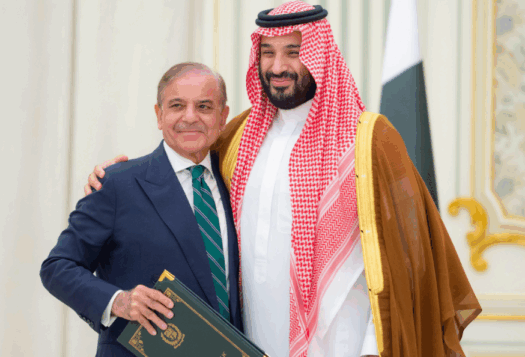
Introduction
The confluence of the Indian Ocean and the Pacific Ocean as a distinctive, interdependent strategic and economic space is fundamentally transforming how both India and Australia operate with the broader region. Both countries view the Indo-Pacific as a construct that safeguards their security apparatuses, economic interests, and balance of power in the region. Canberra engages with the Indo-Pacific Endeavour (IPE), and New Delhi interacts with the region through an array of maritime initiatives and regional forums, such as the Indo-Pacific Oceans Initiative (IPOI) and the Security and Growth for All in the Region (SAGAR).
Recently, India and Australia have deepened their bilateral strategic efforts, most notably in the Comprehensive Strategic Partnership of 2020, the inaugural September 2021 India-Australia 2+2 dialogue, and the March 2022 India-Australia virtual summit. While security and defense remain a priority for both Indian and Australian foreign policies, the scope of security concerns is steadily expanding to incorporate emerging threats like climate change, natural disasters, public health, and economic security. Both countries have amplified this engagement across different platforms, avenues, and action areas. As allies in the Indo-Pacific, both Australia and India are well-placed to champion gender perspectives and mainstream inclusion through their bilateral and multilateral engagements. India and Australia can now make concerted efforts to include the gender lens within their approaches to resolving open-ended challenges to human security in the region that are inclusive and equitable.
The Role of Gender in Global Security Issues
There is an opportunity to anchor the gender mainstreaming dialogue and deepen the relationship between Australia and India. This is possible by strengthening existing initiatives and integrating newer perspectives, such as the ‘Feminist Foreign Policy’ and similar gender mainstreaming approaches that have widely considered the gender lens.
As allies in the Indo-Pacific, both Australia and India are well-placed to champion gender perspectives and mainstream inclusion through their bilateral and multilateral engagements.
As allies in the Indo-Pacific, both Australia and India are well-placed to champion gender perspectives and mainstream inclusion through their bilateral and multilateral engagements.
Language and other diplomatic instruments play important roles in framing a values-driven and rights-based approach that contrasts traditional realist and strategic ambitions. Therefore, there is some scope to employ inclusive language to more tactical issues. Countries in the Indo-Pacific have headed towards a non-hegemonic regionalism. To match this penchant, India and Australia can deepen their bilateral relationship through multilateral and regional forums – such as ASEAN, APEC, and IORA – to adopt inclusionary measures that will also strengthen a rules-based world order. For example, ASEAN launched its ‘Gender Mainstreaming Strategic Framework’ in September 2021, outlining commitments to develop the organization’s gender and inclusion capacity.
A UN Women-UNDRR report that measures gender responsiveness and disability inclusivity revealed the need for a greater understanding of vulnerabilities to mainstream the gender-equal and socially inclusive Disaster Risk Reduction (DRR). As the intensity of natural disasters in the Indo-Pacific increases and its population becomes more vulnerable, women and marginalized groups are more likely to suffer from the underlying risks of inequality. Studies show that women are 14 times more likely to die from disasters than men, illustrating the discrepancies in social and economic rights across genders.
The Indo-Pacific conversation relies on economic cooperation, but an inclusive, free, and open Indo-Pacific needs to consider women’s involvement in the economy. Inequalities persist in labor force participation, financial inclusion, and representation across managerial positions. In 2017, the International Labor Organization estimated that narrowing gender gaps could add $3.2 trillion to the entire Asia-Pacific economy. Presently, empowering women to achieve economic security is more visible in both countries’ internal policies, but domestic gender realities are vastly different in India and Australia.
Widening the Scope of Defense and Security
India and Australia have several avenues to adopt a gender-inclusive lens and jointly tackle emerging shared priorities.
As the scope of defense and security broadens to incorporate a wider range of global issues, India and Australia can prioritize including a more inclusive lens in sensitization and training within their security sectors. For example, the Indian and Australian navies both work on Humanitarian Assistance and Disaster Relief (HADR). Incorporating more gender-diverse perspectives and involving women in decision-making processes might improve outcomes.
Australia has also increased its efforts to ensure more robust participation of women in its military by prioritizing the retention of women officers, recruiting more women, and understanding barriers to their promotion and retention. India has also adopted steps to address women’s participation in its armed forces. The uncertainties of the Indo-Pacific require major powers and their allies to prioritize strengthening security partnerships. Therefore, gender equality in the military could be a pragmatic approach toward gender mainstreaming in the Indo-Pacific.

The Quad, comprising the United States, India, Australia, and Japan, is another outlet that can foster gender inclusivity in security dialogues. For instance, under the September 2022 Guidelines for the ‘Quad Partnership on HADR in the Indo-Pacific’, partners pledged to promote inclusion by advancing gender equality and women’s and girl’s empowerment, ensuring persons with disabilities are agents and beneficiaries of humanitarian action, and guaranteeing that indigenous people, minority groups, and persons in vulnerable situations are not left behind. Clauses on women and human rights in defense and security dialogues are rare. Thus, its inclusion blurs connotations of ‘hard’ and ‘soft’ security and opens a space to include non-traditional security challenges. Similarly, other bilateral avenues of cooperation, such as the 2+2 dialogue can make provisions for gender inclusion.
Trade and Economic Cooperation
Trade and economic cooperation remain essential elements of the Indo-Pacific conversation. In 2021, the trade ministers of India, Japan, and Australia launched the Supply Chain Resilience Initiative (SCRI) for deeper engagement with gender considerations. COVID-19 has highlighted the importance of sustainable and resilient supply chains. The SCRI states that it “aims to create a virtuous cycle of enhancing supply chain resilience to eventually attain strong, sustainable, balanced, and inclusive growth in the region.” Women are often excluded from supply chains, face difficulties accessing economic opportunities, and are vulnerable to human rights violations. Gender-specific initiatives within the SCRI can target these issues while also fulfilling foreign policy ambitions. India and Australia should advocate for Identifying and addressing gender inequality in supply chains by integrating a gender perspective in the SCRI’s mandate. In doing so, India and Australia would introduce a gender-inclusive lens to overall economic development discussions.
Information and Data Sharing
During the India-Australia 2+2 dialogue, ministers welcomed the presence of a liaison officer from Australia at the Information Fusion Center Indian Ocean Region (IFC-IOR) near New Delhi. The Indian government inaugurated the IFC-IOR in 2018 as an information-sharing hub for maritime data and underscores that its approach aligns with the vision of Security and Growth of All in the Region (SAGAR).
Including the think-tank or business sectors to support ongoing diplomacy dialogues, and campaigns for distinct mindsets, experiences, unique challenges, ideas, and strategic thinking would improve gender inclusivity and uplift more diverse perspectives.
India-Australia dialogues have included discussions on bolstering science, tech, and research collaboration. As both bilateral and multilateral cooperation between India and Australia develop, closer engagement within policy circles can be fostered. Including the think-tank or business sectors to support ongoing diplomacy dialogues, and campaigns for distinct mindsets, experiences, unique challenges, ideas, and strategic thinking would improve gender inclusivity and uplift more diverse perspectives.
Conclusion
The Australian Department of Foreign Affairs and Trade (DFAT) has committed to advancing gender equality and is well-placed to advocate for economic security through funding and development programs. However, addressing economic security will require a more targeted and collaborative approach encompassing different key allies in the Indo-Pacific.
Traditionally, Australia and India have not centered gender within their foreign policy approaches. Integrating a gender component in their bilateral relationship and fostering broader interaction with the Indo-Pacific region, which has previously been dominated by hard security concerns, has become a challenge. Additionally, both countries are limited in their influence and must carefully position themselves with like-minded allies to push for a more inclusive Indo-Pacific region.
The Indo-Pacific represents the largest self-identified strategic space in the world; as a result, countering future challenges in the region will require more varied perspectives and greater diversity in thought. As exemplified by COVID-19, a collaborative and synergistic approach is necessary to counter these emerging challenges while maintaining mutual interests. Both traditional and non-traditional security threats have a gender component and disproportionately impact women and marginalized groups, as evidenced during the pandemic. Foreign policy discourse has only recently included gender as a valued component, but its importance underscores that it should be the foundation for an inclusive Indo-Pacific. India and Australia must act upon their renewed and reinvigorated security ties to help shape the future of the Indo-Pacific.
Editor’s Note: This article has been adapted for SAV from a longer paper written by the authors as part of The Australian Feminist Foreign Policy Coalition (AFFPC) Issue Paper Series for IWDA. The paper is available here.
***
Image 1: Prakash Singh/AFP via Getty Images
Image 2: Darrian Traynor via Getty Images


